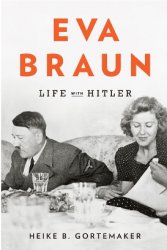Norstad, Gen Lauris (1907—88). US. Beginning his military career as a cavalry officer, Norstad transferred to the US Army Air Corps in 1931 and, by February 1942 was a lieutenant colonel on Gen Arnold’s staff in Washington. In August he was appointed Assistant Chief of Staff for Operations first with the Twelfth Air Force and, from February 1943, with the Northwest African Air Forces. After service in Italy, he was recalled to Washington in August 1944 to become Chief of Staff of the Twentieth Air Force. In addition, Norstad was called upon to act as Deputy Chief of Air Staff at Army Air Force Headquarters. After the war his career continued to flourish with appointments as Director of Plans and Operations at the War Department (1947) and Commander-in-Chief of the US Air Force in Europe (1950). From November 1953 he served as Supreme Allied Commander (shai’e) and Commander-in-Chief of US European Command. He retired in 1963. MS.
NORTHAG. NATO’s Northern Army Group which occupies the northern half of the Central Front in West Germany. Commanded by a British general, subordinate to the NATO c-in-c Central Europe, NORTHAG consists, north to south, of I Dutch Corps, I German Corps, I British Corps and I Belgian Corps; III American Corps would form the Army Group reserve on mobilization, northag’s commanders in the early 1980s developed an innovative concept of more mobile and fluid conventional defence designed to raise the nuclear threshold.
North, Adm Sir Dudley (18811961). Br. Commander North Atlantic Station at Gibraltar during the destruction of the French Fleet at Mers-el-Kebir in July 1940; somewhat unfairly dismissed by Churchill for not intercepting the French cruisers that ran the Straits of Gibraltar in September 1940 on their way to Dakar in French West Africa.
North African landings, Anglo-American (Operation “Torch”, November 7-10 1942) under Supreme Allied Command of Eisenhower. The landings were divided between three main areas. Western Task Force was sent to Morocco: three US divisions under Patton landed at Safi, Fedala and Port Lyautey against sporadic French resistance, and advanced on Casablanca, which was entered on November 10 after considerable naval and land-forces resistance was overcome. Central Task Force landed at Oran, where 1st US Division (Fredendall) met stiff French resistance. US parachute landings to capture the airfields failed. The garrison of Oran resisted until a direct assault was launched, supported by naval and air bombardments, on November 10. Eastern Task Force deployed at Algiers: the landing of 34th US Division with one brigade of 78th British Division was helped by anti-Vichy French officers organized by Gen Mast, cos of the French XIX Corps in Algiers. The fortuitous presence of Adm Darlan led to a negotiated cease-fire at Algiers on November 8, and its extension to the rest of French North Africa on the 10th. WGFJ.
North Atlantic Treaty Organization (NATO). The alliance formed in 1949 between the USA, the UK, France, Italy, Belgium, the Netherlands, Luxembourg, Norway, Denmark, Canada, Iceland and Portugal and subsequently joined by Greece, Turkey, West Germany and Spain. The parties to the Atlantic Treaty agree to treat an attack on one as an attack on all. NATO has an integrated military command structure in which all but France, Spain and Iceland (which has no armed forces) participate. The supreme authority in NATO is the North Atlantic Council that meets once a week at ambassadorial level and twice a year at foreign-minister level. When representatives of those countries that do not participate militarily are excluded, the Council becomes the Defence Planning Committee (dpc). NATO’s main military authority is the Military Committee that contains representatives of the members’ chiefs of staff; the latter meet twice a year. Under the Military Committee come the three regional commands, Europe, Atlantic and Channel. The commands are integrated hqs responsible for planning the defence of their respective areas and holding exercises. The Atlantic and Channel commands have their own small integrated multinational forces under command in peacetime and Allied Command Europe has the ace Mobile force for rapid dispatch to the flanks of the command. The commands are further subdivided into army groups and air forces or maritime areas and sub-areas. Policy guidance on nuclear strategy and forces is worked out in the Nuclear Planning Group, effectively a subcommittee of the DPC. EJG.
North Cape, Battle of. The action off the North Cape of Norway fought on December 26 1943 in which the German battlecruiser Scharnhorst was sunk. On the evening of Christmas Day, Scharnhorst, supported by five destroyers under Rear Adm Erich Bey sailed from Alten Fjord with orders to attack a convoy of 19 ships escorted by 10 destroyers en route for Russia, but to evade contact with major British units. Intelligence and intuition enabled Fraser, commanding the British Home Fleet, to manoeuvre three cruisers, Belfast, Norfolk and Sheffield, under Vice Adm Burnett, to an interposing position which, on the morning of December 26 brought on an action in which Scharn-horsfs radar was damaged. After a second encounter with Burnett’s force, Bey broke off the action and proceeded at high speed towards the haven of a Norwegian port. Meanwhile, Fraser had come up with his 14in-gun flagship, Duke of York, and, at 1647 hours, he opened fire at 13,000yd (12,000m) range. Although Scharnhorst received three direct hits, her speed was greater than Duke of York’s and she succeeded by 1900 hours in opening the range to 22,000yd (20,000m). Fraser, however, had worked four destroyers ahead of her and they delivered a torpedo attack which slowed Scharnhorst and enabled Duke of York to come up again. At least ten more shell hits and further torpedo strikes crippled Scharnhorst; she capsized and sank with the loss of all but 36 of her complement of 1,900. ANF.




 World History
World History









